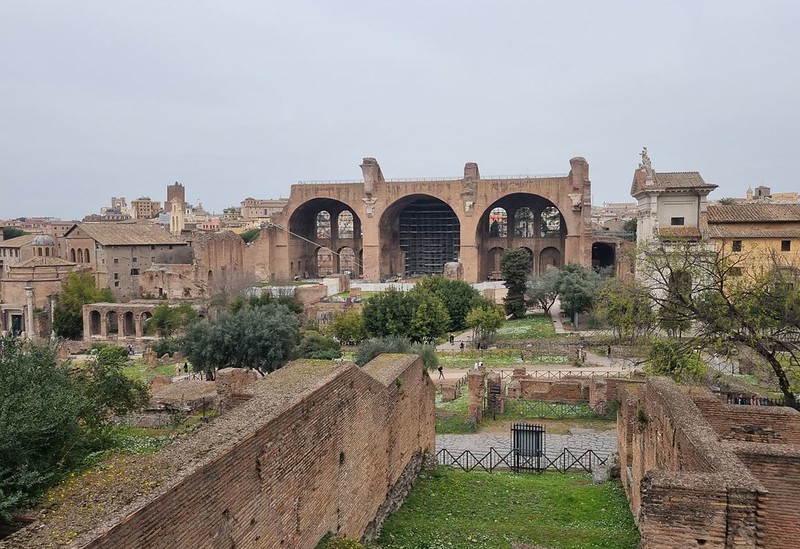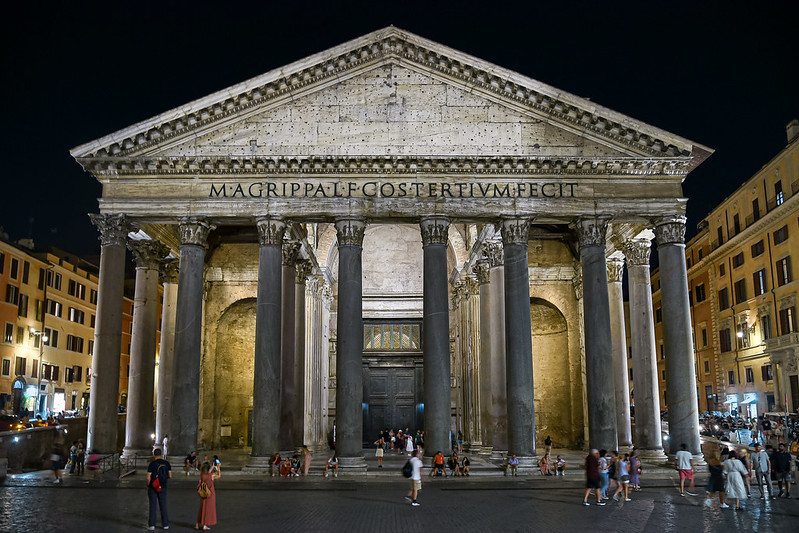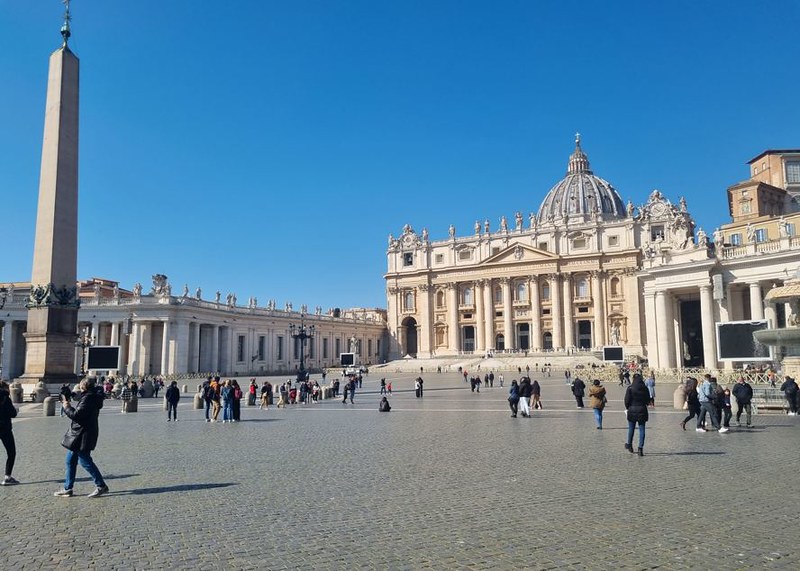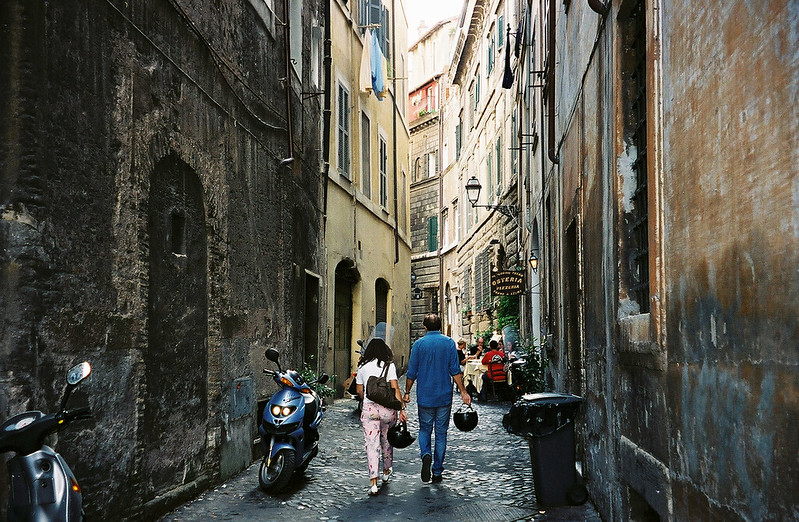If you are planning to visit the capital of Italy, in this post you will find what to see in Rome. With a little travel guide with advices and tips to be able to explore this city without setbacks for your own.
How to get from Fiumicino to Roma Termini?
Train
- The “Leonardo Express” rapid train: This option costs 14 euros and departs every 30 minutes. It doesn’t stop at any stations until Roma Termini and the journey takes 30/35 minutes.
- Regional train: A cheaper alternative at 8 euros. This train stops at all stations and takes 50 minutes. Both trains use the same tracks, so the rapid train does not open doors at the intermediate stations, but the route they take is the same.
📢 IMPORTANT! This option is the quickest as it avoids traffic.
Taxi
The most expensive option, costing between 48 and 60 euros. The clear benefit is door-to-door service with no waiting. The fare is flat within a limited radius.
Buses
There are several lines that make the trip to Rome center. Some stop at other stations or city points. Single and round-trip tickets are available.
🚌 You can book your transfer to Rome from this link

🤓😉 If you need more information about Rome, this link contains articles that might interest you.
General tips for your trip to Rome
- Wear comfortable footwear; in your trip to Rome, you will walk a lot, even if you use public transport, as the buildings are large and in the old parts, you have to move on foot.
- Carry your water bottle and refill it at any of the drinking fountains around the city. If you prefer bottled water, always buy it in supermarkets or small stores.
- Remember that if you go in the hot months and you’re going to enter churches, you need to cover your knees and shoulders, especially in the Vatican. This applies to both men and women.
- Like any big city, pickpockets are present, so be very careful on public transportation with your belongings.
- Don’t accept gifts from strangers like bracelets or keychains because they will ask for money in return.
- Always carry a city map, or have one on your phone, because there are many short, narrow streets that change direction and can easily confuse you.
- A very important piece of advice we’ll give you is to evaluate well what you choose to see in your trip to Rome. If you want to make the most of your time, we recommend picking which places you want to see and highlight them on a map or list them. This way you can define your days by areas to see and make a more relaxed visit to each part.
- Another suggestion is that if you want to see churches or museums, select which ones to go to. Since there is a wide offer, after seeing one or two, the others may seem repetitive. For example, if you’re going to see the Vatican and its museums, you can skip the Etruscan Museum; of course, the pieces are not the same, but it can become boring if you’re not an expert.
😉👉 Book your FREE TOUR to get to know Rome! Click here and save your spot
Where to stay when visiting Rome?
Rome is a city with many neighborhoods and tourist areas. Fortunately, there are options for all budgets, but to make your search easier, we leave you the 4 best areas:
Center of Rome
In this area, you can find the famous Trevi Fountain, Piazza Navona, among other classic tourist spots. There is a wide variety of gastronomic places and nightlife. Staying in this area requires a high budget, as does the area around Plaza España, which is one of the most exclusive areas of Rome.
🏨 We recommend these accommodations: Hotel Navona, Trevi Beau Boutique Hotel y Hotel Castellino Roma
The Prati neighborhood
Close to the Vatican, this area is much cheaper and very close to the center of Rome. This area is mainly administrative, so there are fewer hotels and more apartments, but they often have more attractive prices.
🏨 We recommend these accommodations:All You Need is Rome, Day by Day y Hotel Della Conciliazione
Roma Termini
This area is one of the cheapest and best-connected in Rome. Close to the train station, you can find a wide variety of approximately 3-star accommodations. Although much is said about the safety of this area, keep in mind that the station and its surroundings have been renovated.
🏨 We recommend these accommodations: Hotel Navona, Trevi Beau Boutique Hotel y Hotel Castellino Roma
Trastevere
This bohemian-style neighborhood is a bit removed from the tourist center and is not connected by the subway. Here you’ll find small hotels at good prices and being a less touristy area, it is cheaper and quieter. The neighborhood has a very particular charm thanks to its cobbled streets and buildings painted in pastel colors.
🏨 We recommend these accommodations: Hostel Trastevere, BB Danilo y Flatinrome Trastevere Deluxe Rooms – Green Patio

How do you get around on your trip to Rome?
The best way to navigate Rome is to use the public transport network. The metro system only has 3 lines, making it one of the smallest in Europe. As for buses, there are over 350 lines, and many operate at night, usually starting between 5 and 6:00 AM. There’s also a tram service which, although the network is quite small, serves areas close to Termini.
You’ll need to buy a ticket, which costs 1.50 EUR and is valid for 100 minutes. Additionally, you can get passes for 24, 48, and 72 hours. It’s advisable to consider how many trips you’ll take each day since most points of interest are within walking distance of each other, so you typically won’t need more than 2 or 3 trips per day.

Where to eat in Rome?
As for lunch and dinner in Rome, you will find a wide variety of restaurants, not only Italian, but other types of cuisine, such as Spanish, Chinese, and even Turkish. The gastronomy in general is excellent and there are options for all budgets.
The menus are normally divided into first course, second course and dessert. The first dish is usually a pasta and the second is usually meat. Keep in mind that many times with just the first course and a dessert, you are more than satisfied.
Be sure to try pasta, any variety, but especially carbonara, pizza, tiramisu, and a ristretto coffee. These are just some of the most typical dishes in Italy. Don’t miss the opportunity to eat and drink classics in your trip to Rome.
Among the places to eat, you will find trattorias, which are small restaurants with a very small menu and dishes of the day. They are places that do not have many tables and the prices are cheaper than restaurants.
Another alternative is to eat pizzas or sandwiches to go that are sold in places on the street, which only have a few tables to eat standing. You will also find a variety of kiosks and stalls on the street where you can buy basic foods such as sandwiches, hamburgers, and even snacks.
Of course, if your budget is the shortest, you can always choose to use the supermarket where you will find meals ready to enjoy such as salads, sandwiches, and even some food to heat. Which you can take to your accommodation, or you can directly heat it up there.
Travel Guide to Rome: 10 must-see spots
At this point, we’ll leave you a list of attractions that we consider must-see spots. Of course, any of these points can be modified; the intention is to give you an idea of what to see in Rome and if entry is required.
What to see in Rome?
1 – Roman Colosseum and Forums
The Colosseum is the famous amphitheater built in the first century during the Roman Empire and is one of the largest constructed at that time. It’s built with travertine blocks, concrete, wood, and marble, among other materials. The building consists of tiers and arches.
Currently, you can visit three parts of the building:
- The basements: accessible only with a guided tour. It’s necessary to make a reservation because spots are very limited.
- The arena: one of the newest sectors, which has been reconstructed and is open to the public.
- The main rings: accessible to the 2 rings that form the stands. There’s a gallery with statues and pieces recovered from the site. The forum was the central area of imperial Rome. Currently, you can see the ruins of the Temple of Romulus, the Temple of Saturn, and the Temple of Venus, among others.
To visit both places, you need to get a ticket in advance, especially during peak season.
🎫 Reserve your tickets to see the COLISEUM! Click here and book your spot.
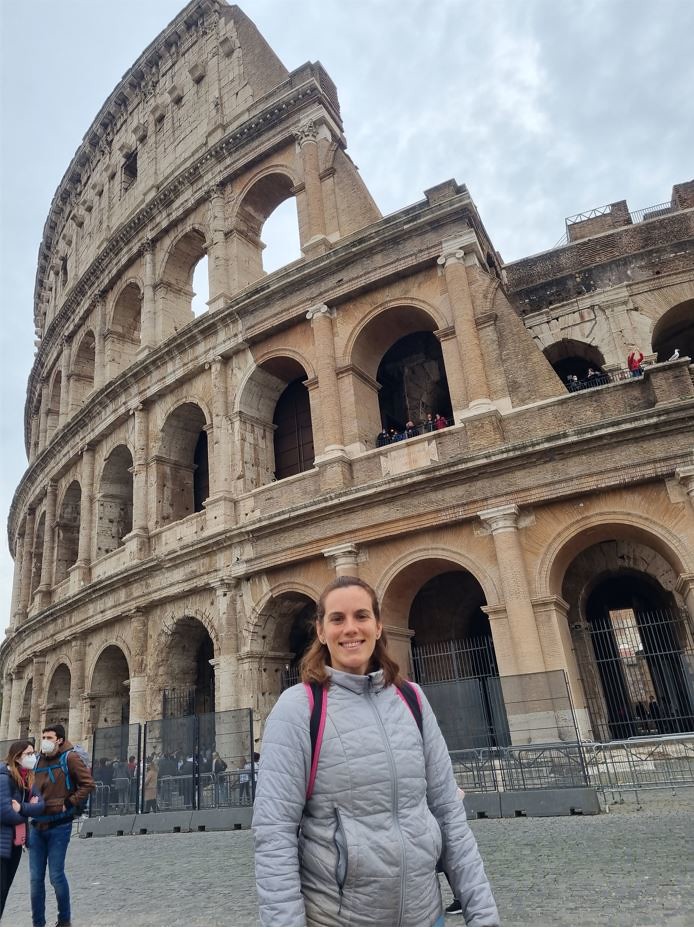
2 – Trevi Fountain
The fountain that has become an iconic symbol of Rome. The Trevi Fountain is the largest Baroque fountain in the city and one of the most famous fountains in the world. Not only is it a masterpiece of water and stone, but it also features in numerous films, making it a cultural and cinematic icon as well.
Surrounding the Trevi Fountain is the lore of coins and fortune. Legend says that to ensure a return to Rome, one should toss a coin over their shoulder into the fountain; throw two if you’re seeking your true love, and three if you’re seeking the affection of an Italian. The coins are collected weekly from the fountain and donated to charity, so they don’t stay in the water for more than seven days.
📣The fountain is accessible 24 hours a day to the public, and it is very crowded during the daily hours
3 – Pantheon of Rome
The renowned Pantheon of Agrippa now serves as a church, originally established as a Roman temple. The Pantheon boasts the world’s largest unreinforced concrete dome and has been continuously used throughout history, providing a rare architectural continuity from ancient Rome through to the present day. Its design is considered a geometrical marvel, as the height of the oculus and the diameter of the interior circle are the same, measuring 43.3 meters (142 ft). It remains in remarkable condition and is among the best-preserved of Rome’s ancient buildings.
💲The Pantheon in Rome, previously free to enter, has introduced an entry fee for visitors starting from July 3, 2023. The cost for a standard ticket is 5 euros.
⭐ Enjoy in your trip to Rome, reserve a Night Tour with an expert travel guide in this link
4 – St. Peter’s Basilica and Vatican Museums
St. Peter’s Basilica was originally built in 324 AD and was later replaced by the current structure in 1626. It houses a vast array of art, including Michelangelo’s “Pieta.” The basilica also contains a crypt where all the popes who served there are interred. Access to the basilica is free of charge.
As for the Vatican Museums, they boast an impressive collection of art accumulated by the popes over the centuries. This complex includes thematic museums, papal departments, galleries, monuments, and gardens. One of the most prominent sections of the museums is the Sistine Chapel, home to Michelangelo’s famous fresco “The Creation.”
The museum is HUGE and requires purchasing a ticket in advance as it is one of the biggest attractions in Rome. If you have limited time, choose which works of art you want to see to prioritize your visit.
⚠ Book your tickets to see the Museum and the Chapel! Click here and reserve your place
5 – Church of Santa Maria in Cosmedin
This church was built on the site of an ancient temple from the year 1632. It is also home to the “Mouth of Truth,” an old marble piece depicting the face of a bearded man. It’s uncertain whether it was part of a fountain or a manhole cover. There’s a myth surrounding it, claiming that if you lie and place your hand in its mouth, it will cut your hand off if you are not telling the truth. The Church is a fine example of medieval architecture in Rome and is located in one of the city’s most ancient districts, offering a glimpse into the Rome of old.
6 – Piazza Navona, a classic that you must see en your trip to Rome
This square hosts some of Rome’s most fascinating fountains. Piazza Navona is built on the site of the Stadium of Domitian, built in the 1st century AD, and follows the form of the open space of the stadium. At its center lies a fountain adorned with an Egyptian obelisk and four sculptures representing the most important rivers of the world: the Nile, the Danube, the Ganges, and the Río de la Plata.
7 – Villa Borghese
This huge is the perfect place to visit and take a break from the city’s bustle. It features green spaces with fountains and ponds where you can even rent a boat to navigate. Villa Borghese is not just a park but a museum in itself, displaying statues, monuments, and diverse wildlife, making it a cultural haven as well as a natural one. The Borghese Gallery is particularly notable for its collection of sculptures by Bernini and paintings by Caravaggio.
👉 Enjoy a guided tour for the Borghese Gallery. Book your place today in this link.

8 – Castel Sant’Angelo
This castle, now a museum, has undergone numerous modifications since its origin in 135 AD. Emperor Hadrian built it as a mausoleum for himself and his family. Its purpose evolved over time, and by the 19th century, it had become a prison. Castel Sant’Angelo is connected to Vatican City through a fortified corridor called the Passetto di Borgo, which the popes could use to escape to the castle in times of danger.
Today, visitors can explore the three levels of the mausoleum, the fortified castle, and the papal apartments. A ticket is required for entry, offering stunning views of Vatican City and the Tiber River.
🎫 Reserve your tickets to visit the Castle! Click here and book your place.

9 – Victor Emmanuel II Monument
This monument located in Piazza Venezia is dedicated to the first king of a unified Italy, Victor Emmanuel II. Constructed of white marble with impressive stairs and columns of the same material, it also features a monument to the unknown soldier with an eternal flame commemorating those who perished in World War I. Interestingly, this building is not among the favorites of the Romans, who often refer to it disparagingly as the “wedding cake” or during World War II, as the “typewriter.”
10- San Pietro in Vincoli (Saint Peter in Chains) Church
This basilica is famous for housing the mausoleum of Pope Julius II and Michelangelo’s sculpture “Moses.” It was built to safeguard the relics of Saint Peter: the chains that bound him in Jerusalem. The chains in the church are two separate sets that, according to legend, miraculously fused together to form one. These chains symbolize the spiritual and physical struggles of Saint Peter.
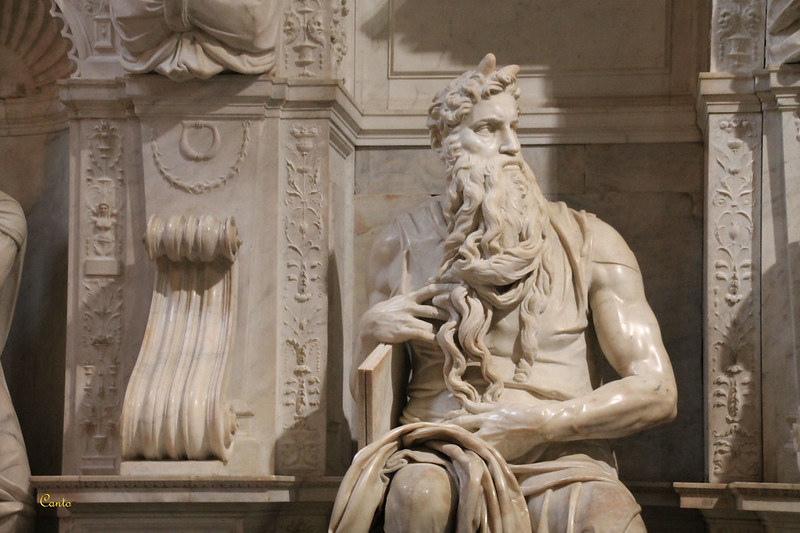
Bonus: Take a Free Walking Tour of Rome
Rome is one of the most historically rich cities in the world, and as such, there’s a wealth to discover. We recommend taking a Free Walking Tour of Rome led by an expert guide who will take you through the city’s most emblematic spots, deepening your understanding of its culture, history, and secrets.
There exist a variety of Free Walking Tour of Rome options available; we recommend that you select the one that piques your interest and fully relish this journey.
🎫 Reserve your Free Walking Tour of Rome! Click here and book your place.

